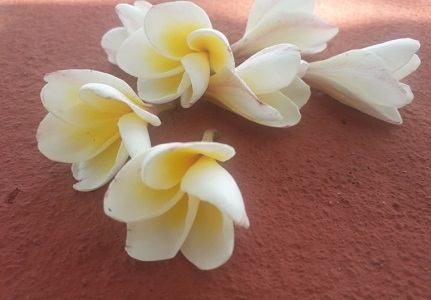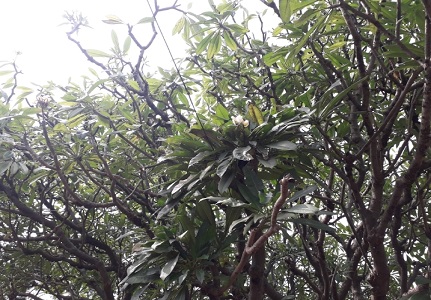With its gnarled branches, long leaves and distinctive flowers, the frangipani is easily one of the most common and identifiable trees. The bark is grey/green and scaly in appearance. The scaling is formed when leaves drop in winter leaving small semi-circular marks on the bark. The branches have a swollen appearance and the leaves, dark green on the top and a lighter shade of green underneath, cluster at the tips of branches. A cut made on any part of the tree will exude a milky, sticky sap that is poisonous to both humans and animals.
Frangipani flowers appear in clusters, also at the end of the branches, and are distinctively scented. The petals are waxy with the centre of the flower generally a different colour to the rest. For example the most common frangipani has white flowers with a yellow centre most commonly named Celadine or White Star.
Usage
The raw material essential oils : Flower get dried within 3 to 4 days and distilled to get essential oil which basically use for perfume or ointment.
As antibiotics : frangipani flowers has number of medicinal compounds in it. contents of this, frangipani flower handy to reduce menstrual pain and prevent fainting due to the heat or sun exposure (heat stroke).
As drug ulcers : combination of frangipani flowers and leaves of olive oil is use as drug for ulcer.
Overcoming swelling : frangipani tree bark is useful for overcoming swelling of body parts.






